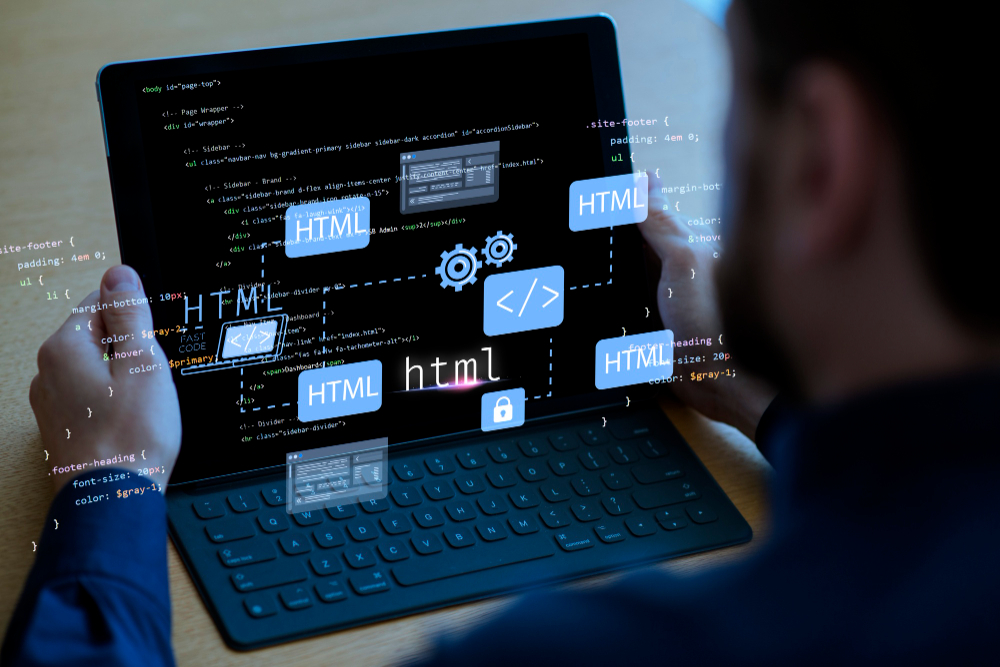Grid vs Flexbox in Web Development

When it comes to modern web design, understanding how to position and organize elements on a webpage is crucial. Two powerful tools often used by web development professionals are CSS Grid and Flexbox. These layout models have changed the game for web designers, simplifying how we style and position content. But deciding when to use Grid vs Flexbox requires understanding their unique strengths and ideal use cases.
This blog post breaks down the differences between Grid and Flexbox, explains their core purposes, and provides tips on which layout tool to use for your next project.
What Are CSS Grid and Flexbox?
Before we can compare Grid and Flexbox, we need to understand what they are and how they function.
CSS Grid
CSS Grid is a two-dimensional layout system. It allows you to position elements on both horizontal (rows) and vertical (columns) axes. Think of Grid as a structure you’d use for complex layouts, such as creating a full webpage with headers, sidebars, content sections, and footers.
When to Use Grid:
- Laying out overall page structures like entire web pages.
- When precise alignment on rows and columns is needed.
- For building templates or reusable layouts.
CSS Flexbox
Flexbox is a one-dimensional layout system. It excels at distributing items along a single axis, whether that’s horizontally or vertically. It’s ideal for arranging small groups of elements, such as buttons, navigation bars, or card layouts.
When to Use Flexbox:
- Aligning elements in a row or column.
- Handling dynamic content, where items may grow or shrink.
- For layouts that require space distribution (like centering elements).
By design, Grid and Flexbox are complementary, but understanding their distinctions greatly impacts how effectively you can use them when designing.
Key Differences Between Grid and Flexbox
Choosing between Grid and Flexbox depends on the specific requirements of your web development project. Below, we’ll cover the main differences.
1. Layout Orientation
- Grid: Designed for two-dimensional layouts. You control both rows and columns, which makes it better for organizing content-heavy web pages.
- Flexbox: Works on a single axis (either row or column). It’s best when you’re aligning items in a straight line.
2. Complexity
- Grid: Handles complex layouts with ease, thanks to its ability to manage both horizontal and vertical alignments simultaneously. Great for multi-layered designs like dashboards or grids.
- Flexbox: Simpler and more lightweight. It’s easier to use for straightforward tasks like aligning buttons or creating responsive menus.
3. Item Control
- Grid: Lets you control placement down to individual cells. If you need a sidebar column spanning multiple rows, Grid gives you the power to make that happen.
- Flexbox: Focuses on the flow of items along its axis. You can adjust properties like item size, alignment, and ordering, but not based on a grid-like matrix.
4. Responsiveness
- Grid: Excellent for creating responsive designs. You can easily adjust layouts for different screen sizes with media queries.
- Flexbox: While also responsive-friendly, Flexbox shines when creating adaptable designs for small collections of elements. Think navigation bars that adjust spacing dynamically.
5. Learning Curve
- Grid: More advanced, with a steeper learning curve. It offers many features like grid-template-columns/rows and areas that add complexity.
- Flexbox: Easier to pick up for beginners. Its simpler syntax and focused functionality make it accessible to new developers while still powerful for pros.
By keeping these differences in mind, web designers can decide which tool aligns with their project needs.
When to Use Grid vs Flexbox in Practical Scenarios
Choosing between Grid and Flexbox often comes down to the type of layout and elements you’re working on. Here are a few scenarios to help clarify when to use each tool.
Use Grid For…
- Page Layouts: Structuring website foundations, such as header, sidebar, footer, and content sections.
- Multi-Column Layouts: Creating magazine-style grids for articles or images.
- Overlapping Elements: Positioning elements on top of one another by using the grid area.
Example:
A homepage layout with a sidebar, main content, and a footer would benefit from Grid. This ensures perfect alignment and positioning across the page.
Use Flexbox For…
- Horizontal Alignments: Aligning menu items, buttons, or icons in a row.
- Stacking Elements Vertically: Adjusting margins between elements in a column (e.g., blog post cards).
- Dynamic Spacing: Handling content that frequently changes in size.
Example:
A navigation bar with evenly spaced links and a logo that needs to stay centered would be a perfect use case for Flexbox.
By combining both Grid and Flexbox where appropriate, you can create responsive, efficient designs tailored to your project’s needs.
Why Choose a Web Development Company?
While Grid and Flexbox are powerful, mastering them can be a time-consuming process. That’s where partnering with a professional web development company like REK Marketing & Design comes in.
At REK Marketing & Design, we specialize in building visually stunning, responsive websites tailored to your needs. Whether you’re just starting out or redesigning your entire site, our team has experience with cutting-edge tools like CSS Grid and Flexbox to deliver results that set you apart from the competition.
Contact REK Marketing & Design today for more information about how we can help take your website to the next level!
What’s the Future of Grid and Flexbox?
Both Grid and Flexbox have become essential in modern web development workflows. While Grid is the go-to for large-scale layouts and Flexbox excels at smaller, component-based designs, the real magic happens when these tools are combined.
By leveraging the strengths of both, developers can create dynamic, highly responsive websites that prioritize user experience. Whether you’re a beginner or an experienced designer, exploring these layout techniques will elevate your web design game for years to come.